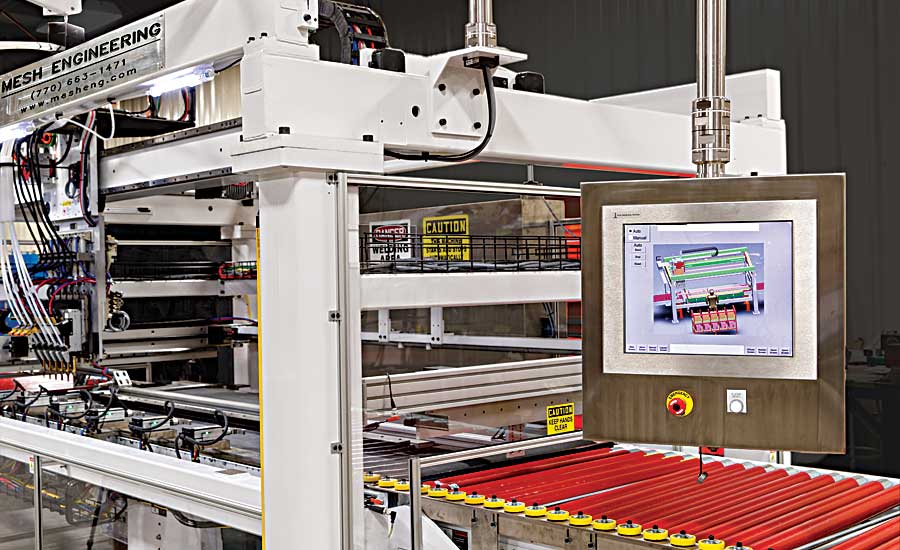Engineers Mesh Cartesian Robot With Nexen Roller Pinion System
February 15, 2018

Manufacturers in many industries have relied on MESH Automation Inc.’s machine engineering, design and installation services for nearly 20 years. During that time, MESH has completed more than 850 projects of all sizes related to robotic workcells, vision inspection and system integration.
One project from a few years ago involved building an automation system for welding studs to a sheet metal door. Design challenges included producing welds strong enough to withstand high pullout force, preventing backside marking on the door, and maintaining production speed while accurately placing components.
MESH used six welding guns to ensure strong welds, and nonmarking material to eliminate backside marking. For the production speed and placement-accuracy challenges, MESH engineers decided that a Cartesian robot, rather than a six-axis model, was the best option for this type of system.

The automation system features six welding guns to ensure strong welds, and nonmarking material to eliminate backside marking. Photo courtesy MESH Automation Inc.
Cody Larson, MESH product manager, says the robot can reach a speed of 1.25 meters per second, while maintaining a position accuracy of ±0.003 inch. It covers a large work area (4 by 8 feet) and is rugged enough for 24/7 operation in a welding environment. Other system features include a mounting plate, linear slides, pneumatic actuators, a light ring and a camera for post-assembly inspection.
A key aspect of system design was finding the best way to move the robot within the work area. MESH engineers looked at various rack-and-pinion and ballscrew systems before consulting with Mahx F. Linster Inc. (MFL), their local motion control expert. MFL recommended that MESH use the RPS roller pinion system (from Nexen Group Inc.), in conjunction with servomotor gearboxes, to optimize robot motion.
“The RPS made the machine design straight forward,” says Larson. “Also, performance [expectation] was exceeded while maintaining our budget.”
Shortly after this project, MESH developed two modular automation cells. MAC cells are equipped with either a Cartesian robot (servo-powered RPS) or a six-axis robot, as well as manual, semiautomatic or automatic part handling. Its skid-mounted design allows for easy installation and repositioning. Other features
include built-in LED lights, a process equipment shelf and a pneumatic preparation station.
MiniMAC models feature a small Cartesian robot that operates on a working table and frame of either 2 by 3 feet or 4 feet square. These compact semiautomatic machines are ideal for lower-volume applications where quality, consistency and safety are important.
Both series are designed for mission-critical applications involving processes as varied as assembly, welding, dispensing, routing, machining, cutting and inspection. According to Larson, the RPS and other high-quality components contribute to the cells’
robustness.
Unlike the traditional rack and pinion system, the RPS features a pinion consisting of 10 or 12 needle-bearing supported rollers that engage a rack tooth profile. The sealed and lubricated rollers move smoothly along the profile, resulting in zero backlash and 99 percent efficient conversion of rotary to linear motion. Maximum speed is 36 fps; accuracy is ±0.00118 inch. The tooth profile is lubricated with a high-performance light grease at installation and then every six months or 2 million pinion
revolutions.
Contact Norman G. Clark for more information about Nexen RPS
Originally posted on Assembly Magazine




